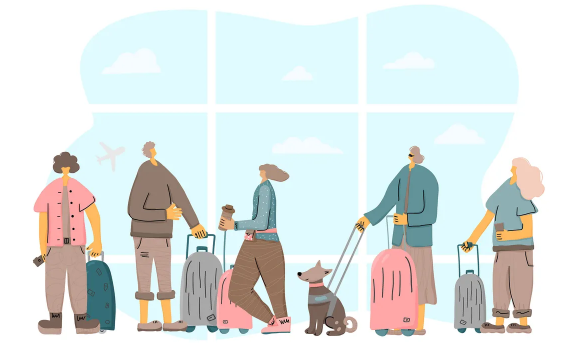
How to Experience Machu Picchu
July 23, 2025
Complete Guide to Hot Springs and Arkansas History
July 28, 2025What are the current rules for flying with guide dogs?
Before flying, you need to make sure you have all the relevant documents, including the dog’s International Guide Dog Federation (IDGF) certification, a valid passport, and any medical documents you need for yourself. If you are travelling outside the UK, you will need to have a valid animal health certificate – before Brexit, travellers with guide dogs had to pay a one-time fee for a pet passport, which was valid for the pet’s lifetime, but now requires a veterinary examination and a new certificate every time you leave the UK. The paper expires after five days – and if it expires abroad, then you will need to see a veterinarian in the relevant country to return to the UK.

What are the best airlines to travel with guide dogs?
I love flying with British Airways or easyJet. The two airlines have partnered with British Airways and Guide Dogs UK to develop guidelines on the mandatory use of dog restraints in aircraft cabins. The UK’s Civil Aviation Authority (the UK’s aviation regulator) said “airlines must accept all assistance dogs for air travel free of charge”. In the United States, there are also very similar regulations, but as a guide dog owner, it is best to research the airlines registered in each country so that you understand your rights and what to expect on each flight. For example, some airlines do not guarantee extra seats for guide dogs and make masks mandatory.
What problems have you encountered when travelling with your guide dog?
I often feel anxious when traveling on an airline I haven’t flown before. The staff on the plane always showed me the various amenities and allowed me to touch the safety gear, but sometimes I was not told what to do with my guide dog in an emergency. In my experience, not many airports have a guide dog-only area after security, so I usually ask the airport staff to assist us in getting to the tarmac area, but often encounter resistance. At airports in the UK, I was told someone would take my dog to help me spend because I wasn’t allowed into that particular area – which I politely declined, but this is further proof that airports and airlines need to do more to support blind travellers with guide dogs.
Many airline staff have told me that they have been doing this for more than 15 years and that my dog is the first dog they have ever seen flying in the cabin. There are so many hurdles to overcome, and it feels very daunting. Do your research before you travel and check with the British Guide Dogs Association for any support and advice you need.




